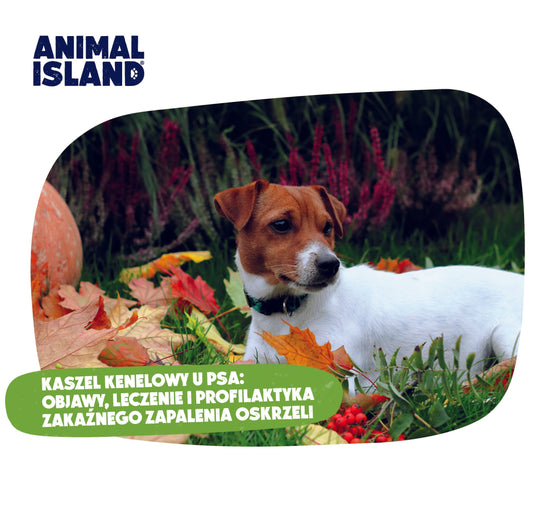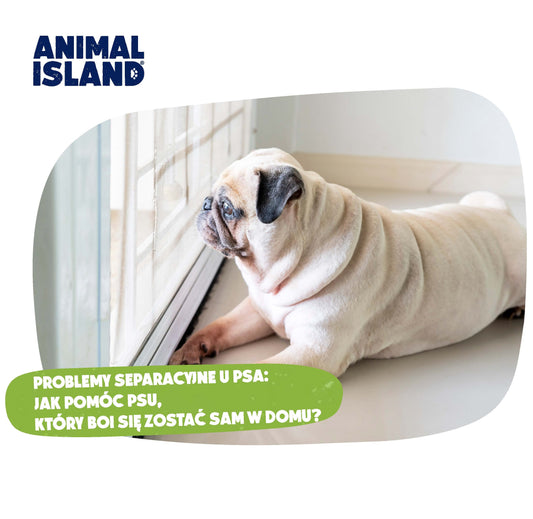A DOG THAT IS A HARD EATER - HOW TO FEED SUCH A DOG?
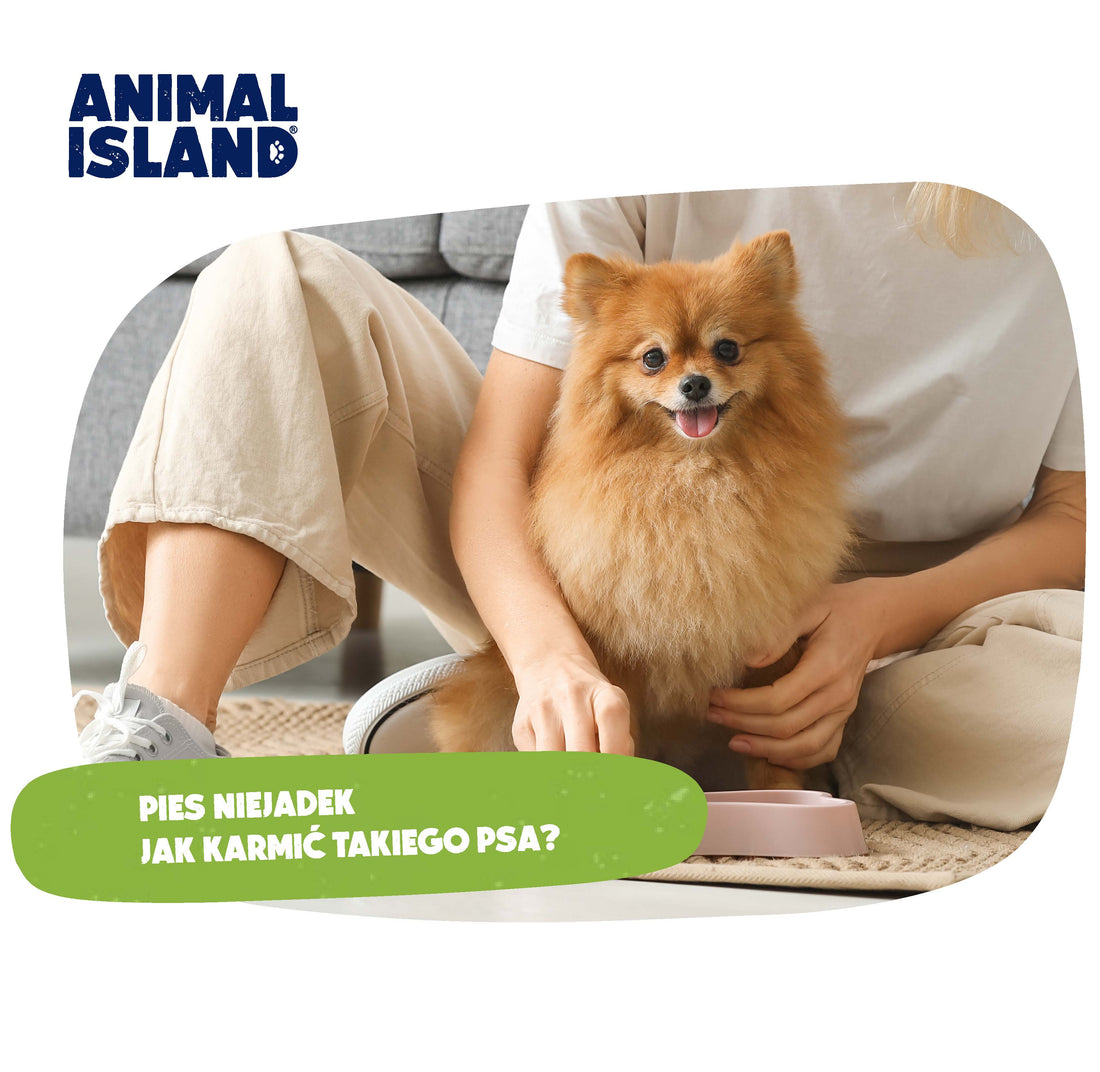
Dog owners know this problem all too well – their beloved friend is a picky eater. Every feeding time becomes a challenge, and the food bowl often remains untouched. We worry about our pet, why our dearest happiness does not want to eat meals?
The causes of this phenomenon can range from health issues to simple whims. In this article, we will discuss how to effectively deal with this problem, what diets and strategies are worth trying, and how to recognize if the problem lies in the health of your dog.
DOG IS A HUSBAND - I WON'T EAT THIS
One of the problems that dog owners may struggle with is a lack of appetite in their dog, which is often referred to as a "poor eater". A poor eater is one that shows a reluctance to eat or eats food in minimal quantities. You care about your dog and its needs, but you cannot agree on this issue. So how do you find out what the problem is with refusing meals? Recognizing a picky dog is not always easy, especially if the animal is usually picky about food.
There are certain behaviors that may suggest that your dog has an appetite problem :
Ignoring food : This is one of the most common signs. Your dog may approach the bowl, sniff the food, and then walk away without tasting it. Sometimes, they may also try to bury the food, which is a sign of disinterest or reluctance.
Vomiting : If your dog vomits after eating or even on an empty stomach, it could be a sign that something is wrong. Vomiting can be caused by a variety of things, from stomach problems to stress.
Lack of Energy : A dog that does not eat enough can become lethargic and apathetic. Lack of energy is not only a physical problem, but also an emotional one. Dogs that do not feel well often do not feel like playing or going for walks.
Weight loss : If you notice your dog is losing weight even though you haven't changed his diet, it may be a cause for concern. Weight loss is often one of the first signs of health problems.
Behavioral changes : A picky eater may also exhibit behavioral changes, such as irritability, anxiety, or avoidance of contact with the owner.
Additionally, sudden weight changes, either loss or gain, can be another indication of eating problems. In such cases, it is worth consulting a veterinarian to rule out any potential medical conditions.
REASONS FOR YOUR PUPIL'S LACK OF APPETITE
Health causes of loss of appetite
The first step in understanding why your dog won’t eat is to check their health. Loss of appetite can be a sign that something is wrong. Illnesses such as infections, gastritis, liver or kidney disease can affect their appetite. It’s worth paying attention to other symptoms such as vomiting, diarrhea, lethargy or fever. If you notice any of these symptoms, don’t delay a visit to the vet.
Dietary causes of loss of appetite
Sometimes, a problem with appetite can result from the dog's diet itself. This can be caused by the monotony of meals or their inadequate quality. Dogs, like people, can get bored with the same food day after day. It is worth experimenting with different flavors and textures to see what suits our pet best. Remember, however, that sudden changes in diet can also lead to digestive problems, so introduce new products gradually.
Psychological causes of loss of appetite
Dogs are very sensitive creatures and their mental well-being can significantly affect their appetite. Stress, anxiety and even boredom can be the reason for refusing to eat. Changes in the environment, such as a move, a new family member or a lack of attention from the owner, can affect the dog's behavior. It is important to provide your pet with the right amount of exercise, play and attention, which will help reduce stress and improve appetite.
HEALTH PROBLEMS THAT AFFECT A DOG'S APPETITE
Oral diseases
Oral disease is one of the most common causes of loss of appetite in dogs. Problems such as gingivitis, tartar, or canker sores can cause pain when eating. Dogs that suffer from these conditions often avoid eating because they associate it with discomfort. Regular visits to the vet and good oral hygiene can prevent many problems.
Internal parasites
Parasites such as roundworms and tapeworms can be responsible for loss of appetite. These uninvited guests not only disrupt digestion, but also steal valuable nutrients from your dog's body. Symptoms of a parasite infection can include not only a lack of appetite, but also weight loss, diarrhea, or vomiting. Regular deworming is key to health.
Digestive problems
Digestive disorders, such as gastritis or ulcers, can also affect the desire to eat. Dogs with digestive problems may experience abdominal pain, nausea, or bloating, which results in an unwillingness to eat. In such cases, it is important to consult a veterinarian and adjust the diet to the needs of the dog.
Kidney and liver diseases
Kidney or liver problems can lead to loss of appetite. These organs play key roles in detoxification and metabolism, and their dysfunction can lead to a buildup of toxins that affect your dog's well-being. Regular blood tests can help detect problems early.
WAYS TO IMPROVE THE APPETITE OF A DIRT-FOODING DOG
Regular meals and fixed feeding times
Dogs, like people, like routine. Try to feed your dog at regular times during the day. Regular meals can help develop a eating habit and improve your dog's appetite.
Introducing variety into your diet
If your dog refuses to eat dry food, try introducing wet food or cooked meals into his diet. Adding a bit of cooked meat or vegetables to the food may prove attractive to the dog and encourage him to eat.
Suitable conditions for celebration
Do not disturb your pet while eating, do not stir the bowl, do not stand nearby.
Changing the feeding place
Sometimes changing where your dog eats can have a positive effect on their appetite. Try feeding your dog in a quiet, calm place, away from the hustle and bustle. This can help reduce stress and increase their appetite.
Changing the feeding container
Sometimes changing the feeding bowl also helps to encourage your pet to eat. Metal bowls often make noise, change the smell and taste of the food. Plastic bowls are also not very stable. Try a properly prepared glass bowl, which provides stability and comfort during meals. You can find glass bowls here https://www.animalisland.eu/collections/miski-dla-psa .
Encouraging physical activity
Regular physical activity not only improves your dog's fitness, but also increases their appetite. Long walks, outdoor play, or running can make your dog more willing to reach for food when they get home.
Avoiding snacks between meals
Giving your dog snacks between meals can help keep him from feeling hungry at dinnertime. Try to limit the amount of snacks and treats he gives so he is more likely to want to eat regular meals.
Introduction of dietary supplements
In some cases, introducing dietary supplements can help improve your dog's appetite. There are products available on the market that contain vitamins and minerals that can support your pet's health and well-being. However, it is worth consulting your veterinarian before using them.
Techniques to encourage eating
Some dogs may need extra motivation to eat. You can try warming up the food to give it a more intense smell that will attract the dog's attention. Another way is to feed the food by hand, which can be especially effective for young dogs or those who are just learning to eat on their own. Another interesting way is interactive feeding, which involves activating the pet to search for delicious flavors on a mat, a Kong. This is a great way to feed the dog through play.
WHEN TO SEEK HELP FROM A VETERINARIAN
Is your pet's lack of appetite becoming increasingly worrying? Here are some symptoms that should prompt a visit to the vet:
Vomiting - Occasional vomiting may not be a cause for concern, but if it is frequent and accompanied by a loss of appetite, it may indicate gastrointestinal problems or other health conditions.
Weight loss - If your pet is losing weight despite no changes in diet, it may be a sign of serious health problems such as kidney disease, liver disease or cancer.
Apathy - Lack of energy and willingness to play is another alarm signal. Animals, like humans, can suffer from depression, but apathy can also indicate infections or other illnesses.
Behavioral changes - Any sudden change in behavior, such as aggression, excessive sleepiness or avoidance of contact, may be a sign of a health problem.
When we notice worrying symptoms in our pet, the veterinarian may recommend various diagnostic tests to determine the cause of the problem. Here are some of the most common tests:
Blood test - This is a basic test that can provide a lot of information about the animal's health. It allows for the detection of infections, anemia, kidney or liver problems.
Abdominal ultrasound - Ultrasound examination allows for the assessment of the condition of internal organs such as the liver, kidneys or spleen. It can help detect tumors, cysts or other abnormalities.
X-ray - X-ray is helpful in diagnosing bone problems, but also in assessing the condition of the lungs or heart.
Endoscopy - This is a more advanced test that allows direct viewing of the interior of the digestive tract. It can be helpful in diagnosing ulcers, tumors, or foreign bodies.
A quick response to loss of appetite and other disturbing symptoms in animals is crucial for their health. Early detection of the problem allows for faster treatment and increases the chances of a full recovery. In addition, regular visits to the vet and check-ups can help prevent many diseases.
DOG FOOD FOR DIETARY EATERS
Wet Foods : Often more flavorful and palatable to dogs. They can be mixed with dry food to increase its appeal. Dry food alone may be less appealing to dogs who have appetite problems. It may also be harder for dogs with dental problems to chew.
Grain-free foods : Some dogs may have food allergies or intolerances, so it's worth trying grain-free foods that are more easily digestible.
Foods with added natural ingredients : Products containing natural ingredients such as meat, vegetables and fruits may be more attractive to your dog.
High-energy dog foods are products that contain a higher amount of calories compared to standard foods. They are especially recommended for active, sporty, working dogs, as well as for those who have trouble gaining weight. They contain a higher concentration of fats and proteins, which provides the dog with the necessary energy for daily activities.
Flavors: Sometimes even the best food is not enough to interest your dog. In such cases, flavors can be extremely useful. Many of them are not only tasty but also healthy, making them an ideal addition to the diet.
MIXED FEEDING
What is mixed feeding for dogs?
Mixed feeding is a combination of both wet and dry food in a dog's diet, enriched with additives such as fresh vegetables or snacks. It can be used in different ways - one type of food can be the basis, the other a supplement, and sometimes both elements are equal. Such feeding can be a solution in the case of a dog that is a picky eater.
The most popular solution? Feeding dry and wet food alternately or simultaneously!
Is this a good idea? It depends on the dog's needs and your preferences. If you normally feed your dog dry food, introducing wet food can be a great way to diversify their diet. It also works well for dogs that need to be encouraged to eat or have special nutritional needs.
Advantages of mixed feeding:
at Variety of diet – add fresh products to the food, such as vegetables or egg yolk.
at Better hydration – wet food contains more water.
at Encouragement for picky dogs – wet meals are more appetizing!
Important rule: Never mix dry and wet food in one meal – feed them separately to support your dog's digestion!
ANIMAL ISLAND'S SOLUTION
In the case of a picky eater, we recommend our premium food. This is an ideal option for dogs with digestive problems, allergies, or hypersensitivity to ingredients.
Animal Island wet food - duck with carrot and pear https://www.animalisland.eu/products/mokra-karma-dla-psa-kaczka-z-marchewka-i-gruszka-6x400g-animal-island-1?_pos=13&_fid=2902954d5&_ss=c
This is a delicious dish that will definitely catch the attention of your Pupil's sensitive nose. Tender duck meat and juicy pear provide excellent taste and aroma of the meal.
We guarantee:
- at 100% natural and aromatic ingredients
- at Human grade meat
- at A mono-protein recipe that is suitable for dogs with allergies and sensitive tummies
- at The power of beneficial vitamins A, B, C and E, calcium and antioxidants
ANIMAL ISLAND EXPERT SUPPORT
We are extremely sensitive to all the needs and emotions of your pets, which is why every Guardian can always count on the support of Anna Derkacz , the guardian of the dog Lusia and the cat Tajga, Ania is also the founder of the Animal Island brand. If you need advice, you will find help here!
INTERESTING FACT AT THE END
A little off topic, but about our beloved dogs.
Did you know that dogs have the ability to sense time, although they can't read clocks like we humans can. How is it that our four-legged friends can so precisely determine when we're coming home or when it's time for a walk?
The secret lies in their exceptional sense of smell. Dogs have an extremely developed sense of smell, which allows them to perceive and analyze smells in a way that we cannot imagine. Each smell has its own intensity and changes over time, which dogs can use to determine the time of day.


 Wścieklizna
Wścieklizna

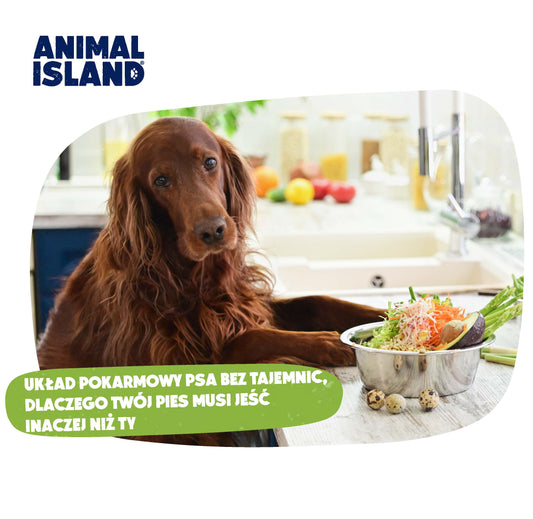

 Zęby i jama ustna – stworzone do chwytania, nie mielenia
Zęby i jama ustna – stworzone do chwytania, nie mielenia
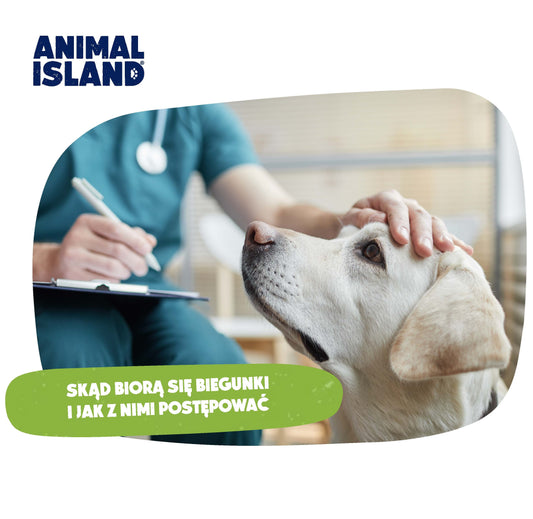



 ROZSĄDNA DIETA, BY ZAPOBIEGAĆ BIEGUNCE W PRZYSZŁOŚCI
ROZSĄDNA DIETA, BY ZAPOBIEGAĆ BIEGUNCE W PRZYSZŁOŚCI
